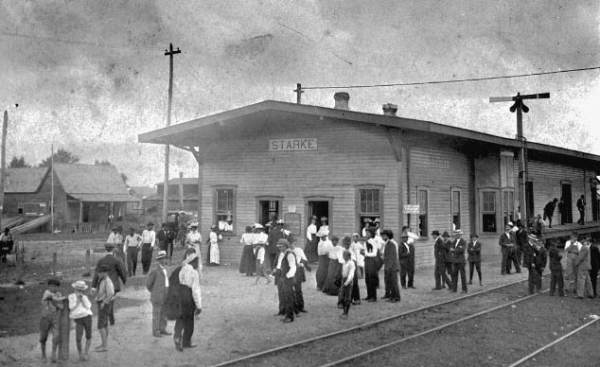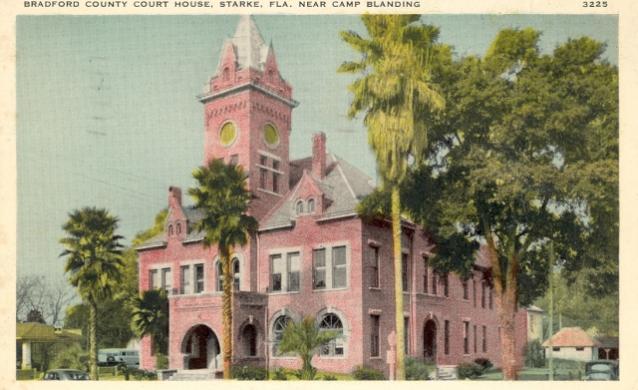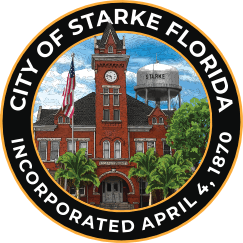Prior to 1857, the area that would one day become Starke was largely wooded with few settlements and pine forests. The construction of the Fernandina to Cedar Key railroad would bring the first real development to the area; the city served as the halfway point on the route.

Land speculator and developer George W. Cole was attracted here by the prospects of growth following arrival of the railroad, and obtained title to a 40-acre tract on both sides of the railroad for $100. This section of land was known in legal description at the time as “The Original Town of Starke.” Mr. Cole, whose efforts were instrumental in obtaining the post office here, was named as the first postmaster.
The city’s namesake continues to be an area of dispute. One legend has it that the post office was given the name of Starke in honor of Mr. Cole’s fiancé, whose family name was Starke. Another account has it that the town was named in honor of Madison Starke Perry, Governor of Florida from 1857 to 1861. No one actually knows which version of the naming is correct.
The small town officially incorporated on April 4th, 1870, and was boosted into prominence when residents of Bradford County voted to move the county seat from Lake Butler to Starke. It marked the beginning of a 45-year contentious battle between the two communities, with control flipping back and forth several times until the Florida Legislature intervened in 1921 and created Union County, with Lake Butler as its seat. 
Starke had truly arrived as a community when, in 1879, the city’s first newspaper was established. The Florida Weekly Telegraph, known today as “The Bradford County Telegraph”, covered events weekly in the community and across the state. The paper’s owners used it to advertise Starke’s virtues, ranging from agricultural productivity to vast timberlands, helping to attract more attention and putting the city keenly in the eye of Tallahassee and the outside world. The paper remains in operation today, and is Florida’s oldest weekly newspaper.
During the 1880s and 1890s, the city and surrounding areas became an agricultural hotspot. Timber and oranges were the two biggest commodities to be exported from the county at the time until disastrous freezes ended the up-and-coming citrus industry in the late 1890s. In the years after, strawberries soon took their place and by the early 1900s, the area was one of the biggest strawberry exporters in the South. That heritage continues to be celebrated with Bradford County’s annual Strawberry Festival.
The construction of U.S. Highway 301, known at that time as State Road 13, was the next catalyst for growth. The route connected Jacksonville to Tampa by road for the first time, and would lead to a burgeoning hotel and hospitality industry within the city. In the years following and with the outset of World War II, Starke became home to thousands of soldiers in training who were stationed at nearby Camp Blanding. Call Street in particular was a popular spot for the trainees who would frequent the movie theatres and nightlife in the area.
Postwar, many veterans who had been at Camp Blanding chose to return and make the community their home. The city would continue to see growth and its share of controversies in future years, shaping it into the community that it is today; a friendly stop for passersby on Highway 301 and an important cultural and logistical center for the tri-county area and north central Florida.
